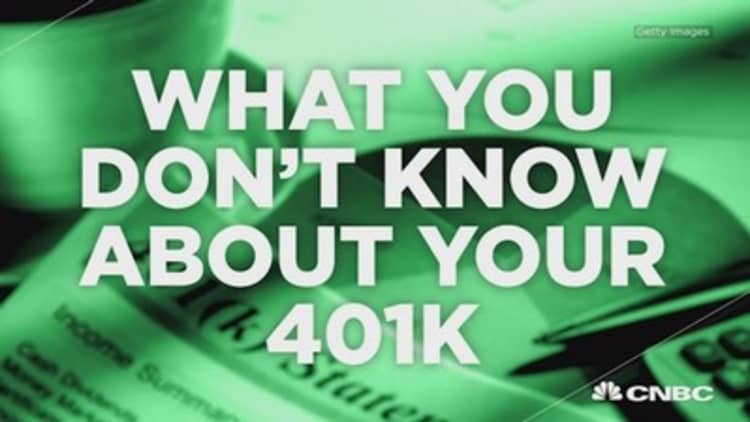


Contributions to employer-sponsored retirement plans have reached a record high—but not all investors are poised to benefit.
The average 12-month 401(k) savings rate, which includes contributions from employees and employers, was $10,180 at the end of the second quarter, up roughly 3.5 percent from last quarter, according to a new report from Fidelity, the nation's largest retirement plan provider. It's the first time the average 401(k) savings rate has surpassed the $10,000 mark.
At the end of the second quarter, the average 401(k) balance was $91,100, down 0.7 percent from last quarter's record numbers and nearly flat from a year ago, according to Fidelity.
Individual Retirement Account balances also reached a new record, with the average balance at $96,300 at the end of the second quarter, up 2.4 percent from last quarter. Average IRA contributions dipped 14.6 percent, to $2,690, a drop that Fidelity attributed to investors making last-minute contributions in the first quarter ahead of the tax-filing deadline.
Read MoreAmerican savers skimp on retirement plans
Socking away more money has bolstered 401(k) balances. Over the past year, contributions have accounted for 53 percent of the change in balances, while the market effect is 47 percent, said Doug Fisher, senior vice president of workplace policy development for Fidelity. "That tells me we're in a volatile market," he said. The 10-year average, Fisher said, is 54 percent market impact and 46 percent contributions.
At least one set of investors isn't benefiting: those with 401(k) loans. Fidelity data show the percentages of people initiating a loan or repaying one have remained steady at 10.1 percent and 21.9 percent, respectively. But the average loan has increased to $9,720, up 0.9 percent from last quarter and 2.3 percent from a year ago.
"People have this false sense of continued prosperity," said Fisher, who likened the loans to the "wealth effect" that led consumers to tap home equity ahead of the housing crisis. But that's a risky move given the weight of the contributions in this market. "When people take loans they discontinue their contributions or reduce them, and then they start falling further behind," he said.
The damage is exacerbated the longer it takes to pay back the loan, said Artie Green, a certified financial planner and founder of Cognizant Wealth Advisors in Palo Alto, California. The interest you pay yourself on that loan is typically less than the returns from having those funds invested. "It's almost like stopping the growth on your 401(k)," he said.
Read More No 401(k)? No problem. 3 more ways to save
For another set of consumers, rising 401(k) balances have come with additional risk. Fidelity found that 18 percent of account holders age 50 to 54 had a stock allocation at least 10 percentage points higher than recommended. Among those age 55 to 59, 27 percent did.
Now is the time for people in their 50s to reassess asset allocation, said Fisher, to limit the negative impact of a market downturn shortly before retirement. "What happens if [the market] corrects?" he said.


